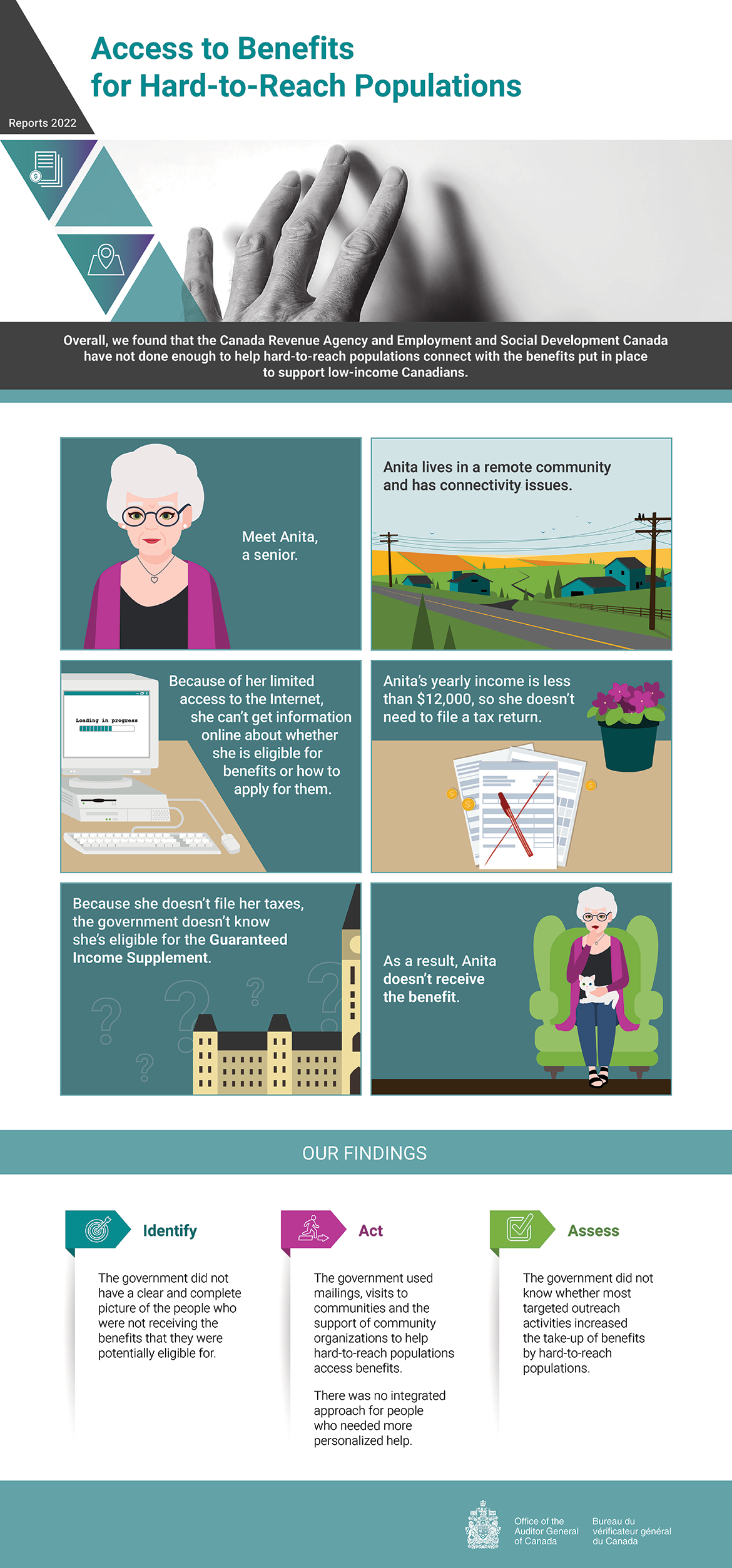Report 1—Access to Benefits for Hard-to-Reach Populations—Infographic

Text version
Overall message
Overall, we found that the Canada Revenue Agency and Employment and Social Development Canada have not done enough to help hard‑to‑reach populations connect with the benefits put in place to support low‑income Canadians.
An example of someone who is hard to reach
Meet Anita, a senior.
Anita lives in a remote community and has connectivity issues.
Because of her limited access to the Internet, she can’t get information online about whether she is eligible for benefits or how to apply for them.
Anita’s yearly income is less than $12,000, so she doesn’t need to file a tax return.
Because she doesn’t file her taxes, the government doesn’t know she’s eligible for the Guaranteed Income Supplement.
As a result, Anita doesn’t receive the benefit.
Our findings
Identify
The government did not have a clear and complete picture of the people who were not receiving the benefits that they were potentially eligible for.
Act
The government used mailings, visits to communities, and the support of community organizations to help hard-to-reach populations access benefits.
There was no integrated approach for people who needed more personalized help.
Assess
The government did not know whether most targeted outreach activities increased the take‑up of benefits by hard‑to‑reach populations.